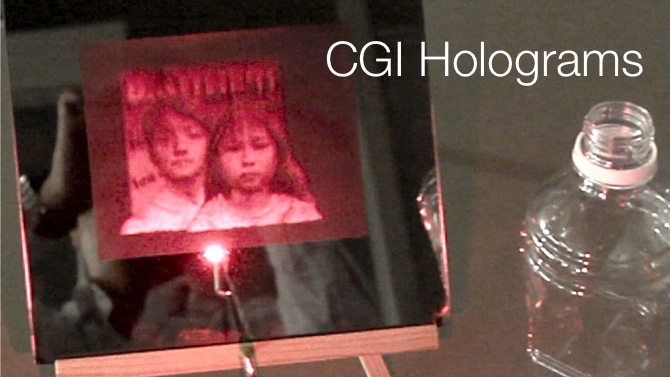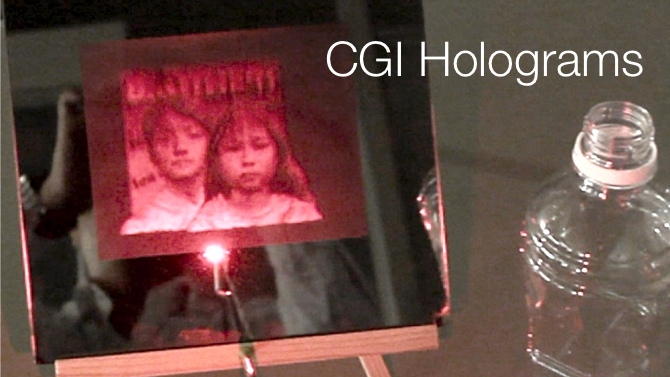
 CGI Holograms
CGI Holograms
Holographic TV: I have to declare a bias here. The Princess Leia hologram scenes in Star Wars convinced me that we will never need holographic TV. This is nothing to do with the fact that video holograms are always depicted as being fuzzy and unstable (presumably to stop them looking real, in which case you couldn't tell they were holograms). No, my issue with them is that while real life may be 3D in the sense that you can walk around it, drama isn't.
What do I mean by this?
Holograms in the cinema
Well, imagine being in a cinema watching a holographic film. If you're sitting in the centre of the auditorium, about half way up, then it's all well and good. But if you've arrived late and you're sitting at the side, then you'll have a bad time, because none of the actors will ever look at you, unless they're making transitory, sideways glances.
That's the problem in essence. Everybody gets a different view. It's not film making: it's moving sculpture.
All of which is a scarcely relevant introduction to a news item this week about a breakthrough from the International Society for Optics and Photonics, who have managed to merge the disciplines of hologram-making and computer generated images.
It takes longer with a computer
Until now, making holograms from computer images has either been impossible or has taken far too long to be of any practical use because of the rendering times. You can only make computer holograms if you calculate an extremely large number of viewpoints for every point on the holographic object's surface - a recipe for waiting a long time for something to happen.
But now, they've found a way to use more CGI-like techniques. Instead of calculating the result at ever conceivable point, they use polygons instead, massively reducing the calculation times.
The society claims to be able to produce photorealistic holograms in reasonable timescales, and if I'm wrong about the unsuitability of Holograms for film making, then this could be the breakthrough that everyone except me has been waiting for.
We're still working on RedShark's comments system. Meanwhile, if you'd like to respond to this article, drop an email to me, david.shapton@redsharknews.com. We'll publish the best comments.
Tags: Studio & Broadcast


Comments